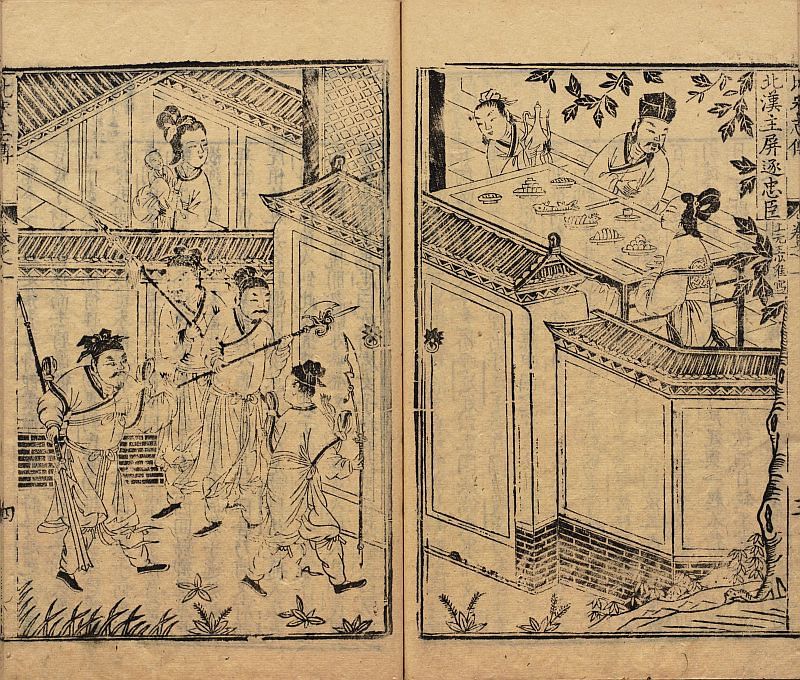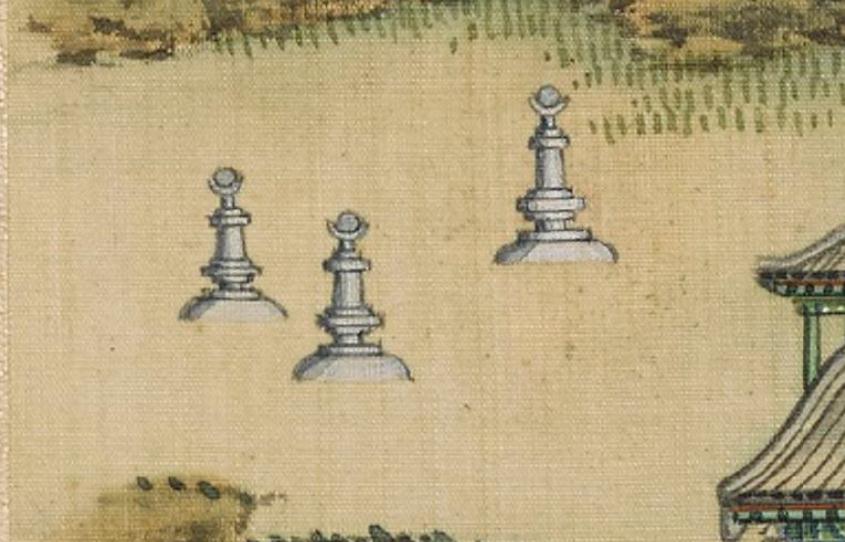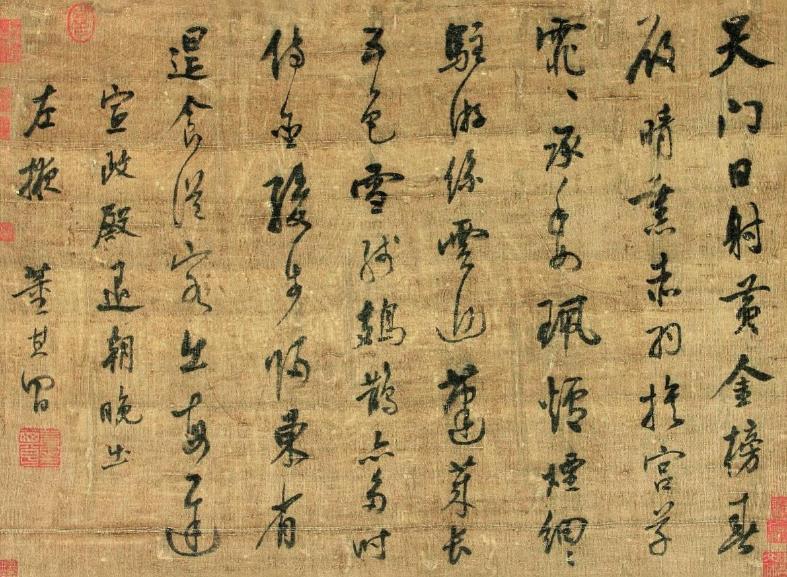Confrontations between the Northern and Southern Song Dynasties and Liao, Xixia and Jin, and the Merging of Southern and Northern Cultures
7 min readThe later reign of Emperor Xuanzong was marked by corrupt politics and weakening of power. Eunuchs seized power in the court while the warlords held control over local areas. The empire was rocked by sweeping peasant uprisings at the end of the Tang Dynasty and ended by warlords in 907. In the next 50 years, the Yellow River Valley was under the reign of the Later Liang (907-923), the Later Tang (923-936), the Later Jin (936-947), the Later Han (947-950) and the Later Zhou(951-960), collectively called the Five Dynasties.
The period from 960 to 1368 saw three historical stages of the Northern Song confronting with Liao and Xixia, the Southern Song confronting with Jin, and the unified Yuan.

In 960, General Zhao Kuangyin initiated a mutiny and overturned the Later Zhou to establish the Song Dynasty in Bianjing (today’s Kaifeng, Henan), called the Northern Song period. The Northern Song successfully quelled the various rebellions and reunited the central plains and spacious southern areas. Having learned the lessons from usurpation by key ministers and the revolts of warlords, the Northern Song applied a series of measures to “deprive their power, control their finance and grain, and reorganize their forces.”In the central government, the prime minister’s power was divided into three independent sections for the convenience oi the emperor’s control. Tongpan (magistrates) were established in local counties to supervise local governors. On the military front, the force dispatching and leading rights were separated. The imperial guard troop was regularly changed but the leader did not shift with the troop to avoid usurpation. The central government also selected the elite of local troops to the imperial guard troop to defend the capital and weaken the local units.A1l taxation income was submitted to the central government except a small part for local expenses. These measures to reinforce centralization were helpful in maintaining unity and stability and promoting economic development. However, some over-corrective actions resulted in repeating structure organizations, low efficiency, enormous expenditure, indirect militarydirection and low battle effectiveness and other serious negative influences.

In 916, Khitan’s chieftain, Yelu Abaoji, living in the desert and northeastern regions, came to the throne and built the Liao regime in Shangjing (today’s Lindong Town, Balin Left Banner, Inner Mongolia). The Khitans, who mainly lived on nomadism, fishing and hunting, gradually learned farming, building for settlement and invented characters based on Chinese character components. The Khitan nobles constantly looted southward and forced the Later Jin to cede Youzhou, Jizhou and 14 other prefectures and then occupied the North China Plain.
In 1004, about 200,000 Liao soldiers attacked the Northern Song and approached Tanzhou from the north side of the Yellow River, near Bianjing, the capital. Prime Minister Kou Zhun advised that Emperor Zhenzong lead the army himself. The Song armhad a high morale and defeated the Liao troops. Emperor Zhenzong accepted the peace negotiation under an advantageous condition and signed the Chanyuan Agreement. Under the mutual agreement, the Song would give Liao 100,000 liang silver and 200,000 pi thin silk each year, the Liao would withdraw their army to the boundary, and both parties would become brother countries. The Chanyuan Agreement,a product of thecomparable power of Song and Liao, further increased the Northern Song people’s burden. About a century-long peace was achieved after the agreement. Both partiescontinued to trade, resulting in a flourishing economy and cultural development.

In the early Northern Song Dynasty, the nomad Dangxiang ethnic group gradually sprang up in the northwestern regions. In 1038, Dangxiang Chieftain Yuanhao ascended the throne in Xingqing(today’s Yinchuan, Ningxia), known as the Xixia. Xixia often invaded the Northern Song and won frequently. However, the battles destroyed the normal mutual trade. The Northern Song’s firm defense caused grain shortage and the financial collapse of Xixia. In 1044, Yuanhao offered a peace agreement to theNorthern Song. Both parties agreed that Yuanhao would cancel the title of emperor and submit to the Northern Song. The Northern Song gave silver, silk and tea to Xixia as “annual payment”and reopened border trade. From then on, Song and Xia maintained a generally peaceful trade relation.
In the middle and later Northern Song Dynasty, the Nvzhen ethnic group living on fishing and hunting in the Heilongjiang River Valley steadily rose up in arms against the oppression of the Liao. In 1115, Wanyan Tribe’s Chieftain Aguda came to the throne and set up the Jin regime in Huining (today’s A’ cheng in Heilongjiang). After exterminating Liao in 1125, Jin initiated an invasive war against the Northern Song and captured Bianjing the next year. In 1127, Emperor Huizong and Qinzong were captured, marking the end of the Northern Song.
In 1127, Zhao Gao,a Kang Vassal from the imperial family, ascended to the throne and relocated the capital to Lin’ an (today’s Hangzhou, Zhejiang), known as the Southern Song. Under the leadership of Yue Fei and other famous generals, the military-civil forces of the Southern Song bravely fought against invasion by the Jin troops and won major victories. But, vilified by the surrendering forces, Yue Fei was executed by Emperor Gaozong Zhao Gou under a fabricated charge. In 1141, Song and Jin inked an agreement that the Southern Song emperor would submit to th Jin, cede the region in the north of the Huaihe River and pay silver and silk as annual tributes to the Jin. Thus, the Southern Song only stayed in a corner in thesouthern bank of the Yangtze River, showing a Song-Jin confrontation in the south and north respectively.
Liao, Xixia and Jin’s successive southward invasions brought widespread calamity to the central plains. The Song people constantly resisted the northern nomad groups’ invasions and effectively fought the battles, winning a relatively sustainable peaceful development environment for the central plains and the southern regions.
The northern ethnic groups also absorbed the advanced culture of the central plains during the expansion. Liao, Xixia and Jin successively imitated the politicalsystem of the dynasties in the central plains, awarded reclamation and migrated Han people northward, resulting in further economic exchange and ethnic amalgamation.
In 947, the troops of Liao captured Kaifeng and returned to the North after depredating on local properties, which met with strong opposition. Deeply touched by that, Emperor Taizong of the Liao Dynasty drew two major lessons from the war,i.e.”indulging troops in plundering the city”and “robbing people of their privateproperties.”He further shifted to “governing areas based on local customs”and implemented the policy of “dividing officials into two parts, with one part governing Qidan based on the state’s systems and the other governing the Han peopl based on the Han systems.”In the regime of Emperor Shengzong, the two different systems adopted in the North and South were gradually integrated into one, with the Han systems widely applied in the central plains. Encouraged by such measures as awarding the poor with farm cattle and exempting those that reclaimed barren land from tax and duties, the vast expanses of northern bordering areas were developed during this period. In the middle of the 1oth century, Liaohai in Northeast China saw a thriving phenomenon described as “hundreds of thousands of registered households and “thousands of miles of reclaimed fields.”Meanwhile, great advances were taking place in iron-smelting, silk-weaving, porcelain-making, wood block printing and other handicraft sectors.
Xixia in Northwest China implemented two systems, namely the Han system and the Dangxiang system, for its official positions, and intimated the official selection through imperial examinations. The rulers of Xixia attached great importance to the culture of the central plains. They had Xixia characters created based on the Han characters, classic books of the central plains translated and printed by using themovable type printing techniques, and the coins with Han characters “Tian Shou Tong Bao”molded. With regard to production, Xixia’s handicraft sectors like iron-smelting, printing, porcelain-making and wool textile making were in leading positions. The printing works with Xixia characters that have been preserved until today are the world’s earliest known movable type printing work. With advanced vertical wind boxes, its iron-smelting could produce extremely sharp weapons that were reputed as the “No.1 in the world.”With regard to agriculture, the farming techniques of the central plains were adopted in an all-around way, and irrigation systems were built in the river bends and Hexi Corridor areas, making great contributions to the development of the northeastern regions.
After eliminating the Liao and Northern Song dynasties and occupied areas northof the Huaihe River, Jin implemented a series of reforms to pave the way for its administration in the highly developed farming areas. Wanyan Liang, King Hailing ofthe Jin Dynasty who was familiar with Han characters and loved reading Han books, often discussed political affairs with Confucian scholars. In 1153, he moved the capital from Shangjing Huining to Yanjing (present-day Beijing),a city of courteswith vast expanses of fertile land and a population full of vitality. By imitatingthe Liao and Northern Song dynasties, he implemented all-round reforms in official systems in 1156, restricting the hereditary privileges of the Nvzhen nobles and establishing a new regime characterized by centralization. Jin also encouraged Nvzhen people to move southward to the central plains, promote the shift of productive relations to the land tenancy system and printed notes and molded cooper and silver coins to drive forward the advances in handicraft and commerce. Meanwhile, Nvzhen people were also encouraged to marry Han people, making customs more similar to those of the Han people. According to the History of Jin, during the two decades following the capital move, Nvzhen people gradually changed their former customs and practiced those of Han people in daily life, music and many other aspects. Even the descendants of royal families also “practiced the Han customs since their childhood”because they knew little about their own Nvhen culture.
The northern ethnic regimes also paid attention to removing the malpractices of the central plains’ dynasties in the course of the full implementation of the Han system. Thus, the Han rangers could live a happy life in the north, too.
Through decades of confrontation, collision and communication, the ethnic groups and cultures of the South and North further mixed together based on the culture of the central plains








